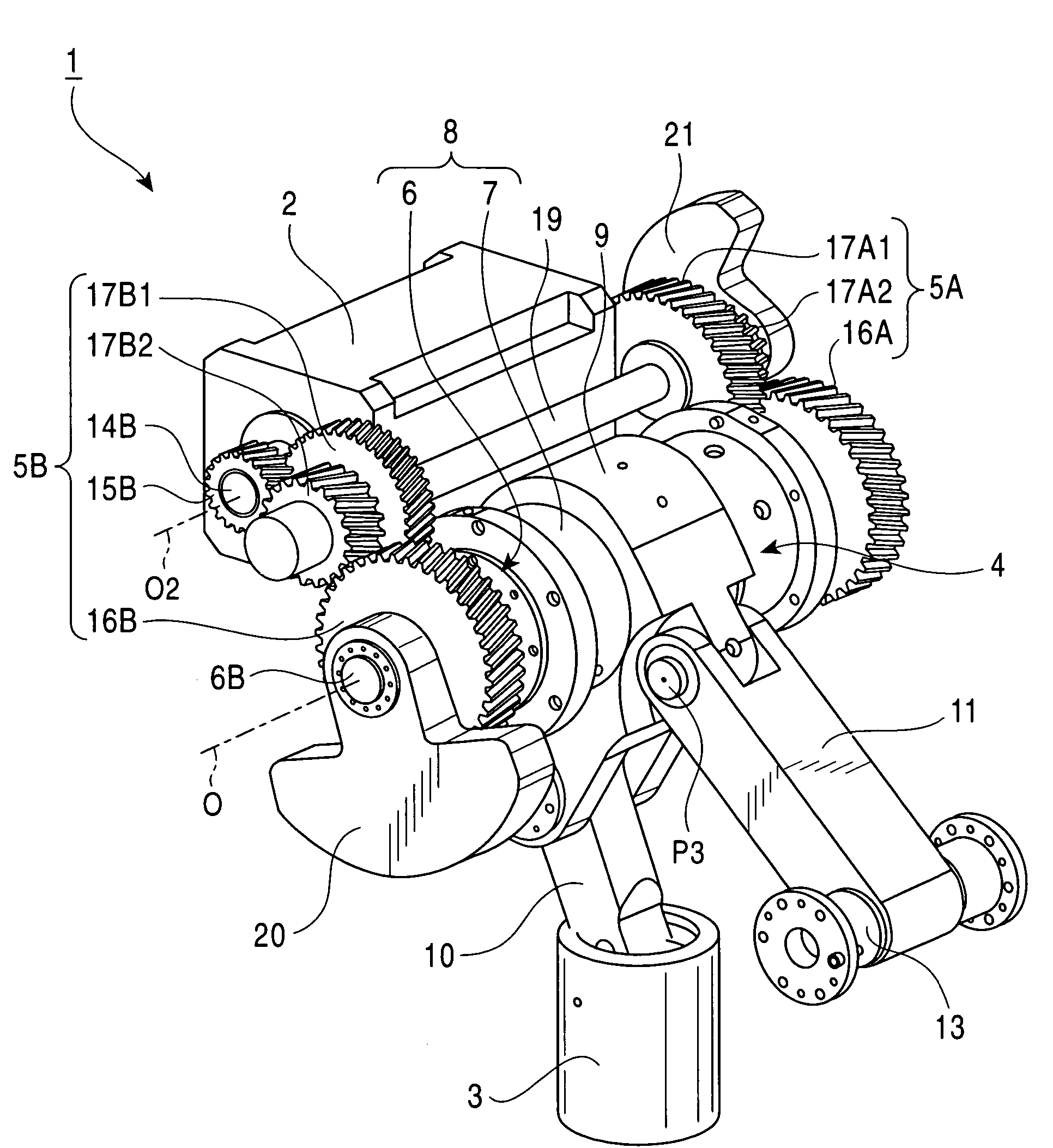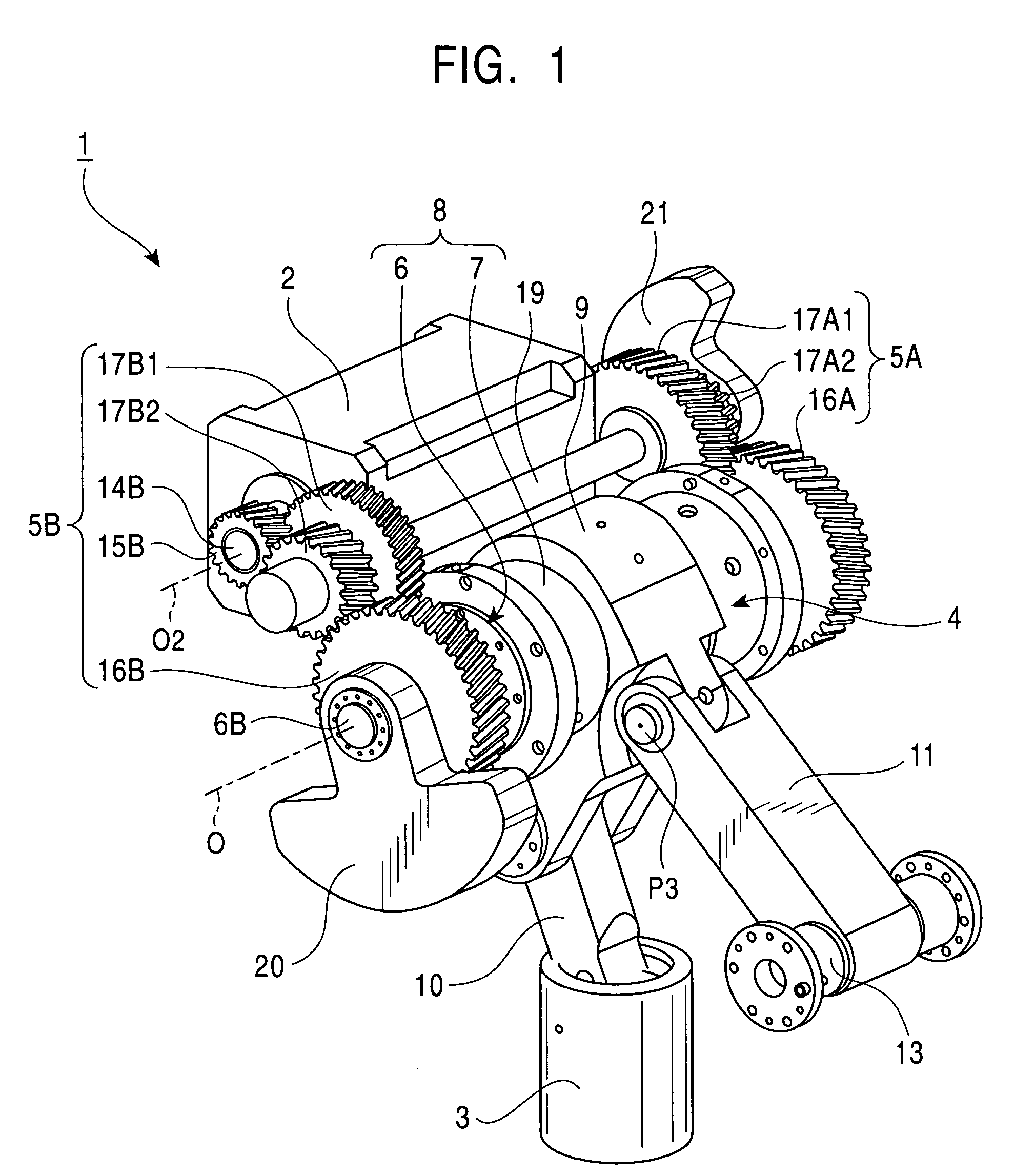Punch Press
a technology of motor-driven punch presses and punch presses, which is applied in the direction of press rams, forging presses, manufacturing tools, etc., can solve the problems of hindering the action of moment load, affecting the quality of machining, and affecting the effect of machining quality, so as to reduce noise, reduce the size of the drive transmitting mechanism, and the contact gear ratio is advantageously high.
- Summary
- Abstract
- Description
- Claims
- Application Information
AI Technical Summary
Benefits of technology
Problems solved by technology
Method used
Image
Examples
Embodiment Construction
[0036]An embodiment of the present invention will be described with reference to FIGS. 1 to 6. FIG. 1 is a perspective view of a punch driving section in a punch press. The punch driving section 1 comprises a servo motor 2, a ram 3 which is installed so as to freely elevate and lower and which drives a press tool, a crank mechanism 4 that converts a rotating motion transmitted to a crank shaft 6 into an elevating and lowering operation of the ram 3, and a drive transmitting mechanism 5 provided between the servo motor 2 and the crank shaft 6. The drive transmitting mechanism 5 transmits rotation of the servo motor 2 to the crank shaft 6 while reducing the rotation speed so that the elevating and lowering operation of the ram 3 can be controlled by controlling the rotation of the servo motor 2. As shown in FIG. 4, the crank mechanism 4 has a crank member 8 having an eccentric shaft portion 7 eccentric to the axis of the crank shaft 6, a pivoting link 9 connected to the eccentric shaf...
PUM
| Property | Measurement | Unit |
|---|---|---|
| crank angle | aaaaa | aaaaa |
| rotation speed | aaaaa | aaaaa |
| rotation | aaaaa | aaaaa |
Abstract
Description
Claims
Application Information
 Login to View More
Login to View More - R&D
- Intellectual Property
- Life Sciences
- Materials
- Tech Scout
- Unparalleled Data Quality
- Higher Quality Content
- 60% Fewer Hallucinations
Browse by: Latest US Patents, China's latest patents, Technical Efficacy Thesaurus, Application Domain, Technology Topic, Popular Technical Reports.
© 2025 PatSnap. All rights reserved.Legal|Privacy policy|Modern Slavery Act Transparency Statement|Sitemap|About US| Contact US: help@patsnap.com



